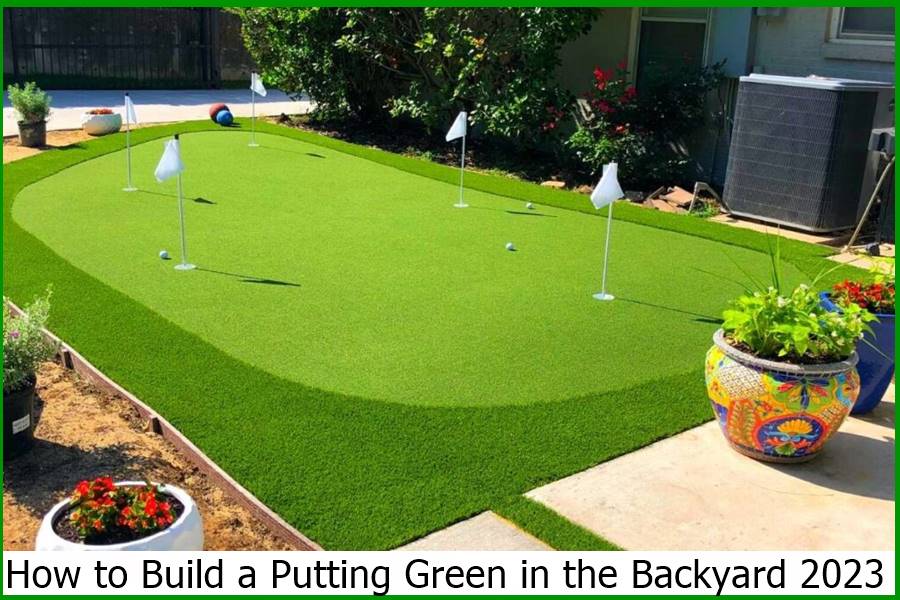How to choose best pots for indoor and outdoor plants 2023
How to choose the best pots for your indoor and outdoor plants
Materials, trends, shapes, and sizes
Plants that grow in containers, indoors or outdoors, need a pot suitable for their characteristics to develop correctly. Hence it is essential to know which type to choose in each case.
A whole universe of possibilities
If you like to grow plants, you have to buy pots. Then you will realize the enormous variety that exists in the market. There are many sizes, from the smallest to concrete outdoor pools. There are also many materials of styles, shapes, and colours, and how could it be otherwise?
The important thing when choosing is to know which criteria should be decisive and which are less critical. To begin with, the material and size are vital issues that can directly affect the development of your plants. A large specimen in a pot that is too small will not be able to grow properly and will end up getting sick and dying.
How to choose the best pots for your indoor and outdoor plants
The size to choose
It is a very relevant question that the dimensions of the plants will determine in terms of their height and volume. If you have plants in pots that are too small, the roots will be constricted and will not develop properly.
Large plants, which can reach a meter in height, will need pots approximately 50 cm in diameter. Better of a heavy material so that it does not tip over on windy days.
For smaller plants, around 50cm tall, 30cm diameter containers will suffice.
Choose deep pots so that the roots of the plant can grow downward. When they appear through the drainage hole, it will be time for you to transplant them to another larger pot.
Indoors or in the garden?
Choosing a pot for an indoor plant has nothing to do with putting it on the terrace, porch, or garden. In the latter case, and especially if you put the plants outdoors without a roof covering them, opting for containers with good drainage is essential.
That is to say; they are pierced to eliminate excess water and avoid waterlogging of the roots, which can be fatal for the plants. Remember that, as they are exposed to rain, we cannot control the water they receive.
We will also have to choose a material resistant to temperature changes, especially frost, if we live in an area with extreme weather. Those made of plastic or fibreglass are usually the most solid and durable.
Inside: enamelled earthenware, metal, glass…
When choosing pots inside the house, you will not have to be so careful to opt for very resistant materials, and you will have more decorative models. Decide for ceramic pots, which are always in trend. Or for metal, industrial-style, or gold models that reflect light and add a touch of glamour to any corner.
Ensure they have a hole in the bottom to drain excess irrigation water. If it is about pot covers, this is not necessary.
Choose clear glass pots for epiphytic orchids, whose roots need daylight for photosynthesis.
From a decorative point of view, you can play with how you display the pots: on special supports, stands, shelves, etc.
Hanging pots are a trend.
Are you looking for an idea to decorate your house with plants without stealing space? Try installing pots hanging from the ceiling, an excellent idea for some specific downward-growing plants, such as pothos (Epipremnum aureum), ribbon or malamadre (Chlorophytum comosum ‘Variegatum’), ivy (Hedera helix) or fern ( Nephrolepis exaltata).
You can decorate the corners or any corner of your living room or study with this pot. Choose light materials such as vegetable fibres or plastic, for example.
Of baked clay, the usual ones
Fired clay or terracotta has traditionally been used to make pots. The roots of the plants are well entrenched in them.
Being a porous material, it helps to eliminate excess irrigation water, which evaporates easily and quickly. For this reason, you must be aware that your plants do not go thirsty. Choose the mud for species that have low water needs.
One drawback of this type of pot is that they are fragile and not very resistant to frost, which is a problem in areas with frigid climates.
Plastic, resistant and functional
The most common and economical pots with plastic ones. They are light and maintain humidity for longer since the irrigation water does not evaporate. Use them for plants that need to have the substrate consistently moist.
One of the drawbacks of plastic pots, when they are outdoors, is solar radiation. During the hottest months of the year, the sun can overheat them, which is not suitable for the roots of the plants.
wooden containers
They are very suitable outdoors for putting rustic notes in gardens or porches. In addition, it is a warm material that protects the roots of the plants from the cold of winter.
There are large ones to grow little trees, for example. Before using them, you should apply a treatment that protects them from fungi and the attack of xylophagous insects.
Of concrete
It is a very decorative material, perfect for outdoor pots, although it also adapts very well to industrial-style interior environments. It brings a very modern air to the environment.
Among its advantages, it is highly resistant to impacts, and the passage of time stands out. In addition, it tolerates the sun’s rays well without overheating, and they retain moisture from the substrate.
Although small, they can be hung like the one in the image; they are usually heavy pots, so the largest ones are difficult to transport.
Bet on the planters
This elongated container is perfect for growing several plants on balconies and terraces. You can incorporate a mechanism to hang them from a railing, although they can also be supported on the ground. If you decide to turn them, they should be light materials.
Types of pots for orchids: are there special containers for orchids?
105 ViewsContainers, Flowers, Garden, Pots, Orchids, Plants
Orchards and Crops have the support of their audience. When you purchase through links on our site, we may earn an affiliate commission at no additional cost. As an Amazon Associate, we earn from qualifying purchases.
About sharing on Facebook share on Twitter share on WhatsApp
In nature, most orchid plants grow in warm, humid forested areas, such as tropical rainforests. They are often found growing wild in the forks of living trees, on the sides of fallen and decaying trees, or on rough, shady slopes. They grow well in these sites because they can absorb water from natural humidity without strong sunlight causing too much sweat and because heavy tropical rains quickly run off their roots when growing on trees or slopes. We have chosen the best pots for orchids and special containers.
While the orchids we buy from nurseries or garden centres have likely never experienced uncontrolled growth in rainforests, confining their roots to a pot goes against their true primal nature. Because of this, as orchid growers, we must do our best to select banks that allow them to grow to their full potential.
It may interest you:
- How to grow orchids at home? for starters
- Five mistakes when growing your orchids indoors
- How to plant orchids in pots?
What is the best pot for an orchid?
About orchid containers
types of pots for orchids
Buying an orchid from a greenhouse or garden centre is usually sold in clear plastic pots with multiple drainage holes. These clear plastic pots can be placed inside decorative glazed pots and sold together, or the decorative pots can be sold separately as an additional item.
Decorative pots are purely aesthetic, usually lacking proper drainage, and aren’t necessary at all. Decorative pots without appropriate drainage holes can often lead to overwatering and root disease in orchids. On top of this, the chemicals in certain ceramic pot glazes can damage the roots of delicate orchids.
plastic pots
The clear plastic pot has some benefits for orchids and orchid growers. Clear plastic pots can allow us to easily change decorative containers to match different festivities or room decor. However, if you are placing these clear plastic pots in decorative pots, removing them during watering is a good idea to allow for proper drainage.
Clear plastic pots also allow us to quickly inspect the roots of our orchid plants for pests, disease, or crowding. When left outside decorative pots, clear plastic pots allow orchid roots to soak up sunlight, just as they would in the wild by growing on the side of a tree. This means the roots can also photosynthesize and add energy to the plant.
Are there special containers for orchid plants?
Do orchids need unique pots?
Many greenhouses or garden centres that sell orchids also sell unique orchid pots. These specific containers for orchid plants often have slats or cut-out shapes on the sides to allow for better drainage and airflow to the roots. Wooden slat boxes are also sold as orchid containers. However, you don’t need to spend a fortune on specialized containers for orchid plants. Any pot with good drainage can support an orchid plant. Select pots with 4 to 12 drainage holes when growing orchids in containers.
Most orchids prefer shallower, squat pots as their roots don’t like all the moisture retained in deep pools, and they don’t need the depth anyway as their roots spread out, not down. When using a deep pool, place lava rock or packing peanuts at the bottom to save money on an unnecessary potting medium that the orchid roots will never use and improve drainage.
Also, when transplanting an orchid every year or two, only choose a pot about an inch (2.5 cm) more comprehensive than the previous pot; it doesn’t need to be deeper, just wider.
Types of pots for orchids
pots for orchids
Below are the pros and cons of different orchid pots:
Plastic pots:
Plastic pots retain more moisture in the potting mix. They also help keep the roots warmer in cooler weather. Plastic pots are very light and can easily be tipped over by tall, heavy plants.
Clay or terracotta pots:
Clay pots are heavier, which makes them tip less. They can also help keep orchid roots more relaxed in hot weather. Many clay or terracotta pots only have a drainage hole, but clay breathes and allows water to evaporate faster, so you may need to water more often.
Containers or baskets with wooden slats:
Depending on your growing medium, it can spill from the slats on the wooden slatted planters or baskets, so you may want to cover them with sheets of moss. Containers or baskets with wooden slats allow drainage and airflow to the roots, so you may need to water them frequently.
BEGINNER’S GUIDE TO HYDROPONICS 2023
Sack culture for all types of plantations
Decluttering your home: 7 tips and tricks that work
How to choose the best pots for your indoor and outdoor plants 2023


